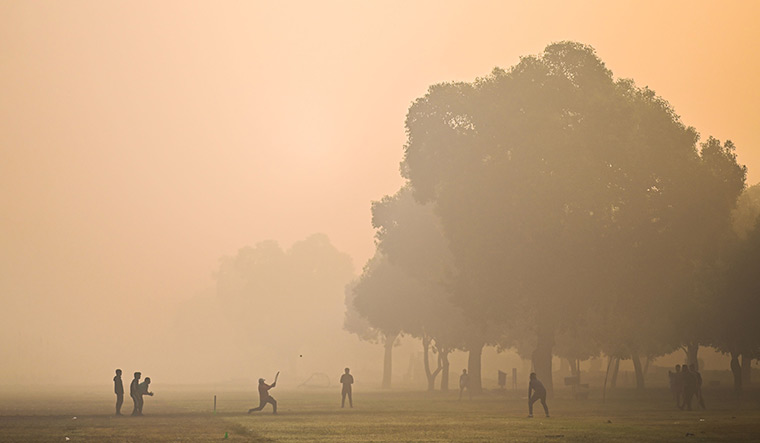In these times, grabbing the now ubiquitous mask before stepping out may not seem amiss to many. As I got my kids ready to go out, I realised that this is nothing new for most Dilliwallas. When the pandemic broke, we must have been the only few with a handy N95 lying around the house, and our kids among the few used to wearing one.
I grew up mostly in Delhi as my father, an IAS officer, was posted with the Central government. School and college years were also spent in Delhi. In 2005, I left to study law at Columbia University in New York, which is where I met my husband. When we decided to move back to Delhi in 2009, we pictured the idyllic city of our childhood. Make no mistake, it was never a small or picturesque town, but Delhi’s great expanse and greenery made it a wonderful place to grow up in. People visiting from out of town would often remark on the well-planned roads and roundabouts, vestiges of our colonial past. Walking in Delhi, weather notwithstanding, meant doing it under the great canopy of trees planted decades ago. Each roundabout with its well-manicured lawns and rudimentary fountains was a joy to behold. The big parks and interspersed ruins of monuments kept it from being just a conglomeration of humanity. Delhi was still a city of extreme weather, but the greenery shielded us from the angry sun in the summers, and all Dilliwallas had a designated park to bask in during the cold winters.
As a child, as soon as the weather improved, we would pack homemade yummies, bundle into our old Premier Padmini and set off for some park. Nehru Park or Lodhi Gardens were our favourites. My parents would spend the afternoons lolling about in the sun, while we kids ran amok on the green mounds of the park or played hide-and-seek amidst the ruins of the monuments. There was enough space for all visitors. Everyone found their favourite spots and planted themselves there for the day.
Unfortunately, my kids, Rayhan, 10, and Sameer, eight, are growing up in a very different Delhi, with face masks and pollution readings a part of their everyday life. Imagine telling a five-year-old that he needs to wear an N95 mask the whole time he is in school, or else it would be tantamount to smoking seven cigarettes a day. In October-November, just as the weather is turning nice, all outdoor activities at school get suspended because the PM2.5 (fine particulate matter) levels hover near ‘hazardous’. Most cities go into red alert when the air quality hits ‘bad’. In Delhi, a bad air day is a good day. Winter months, depending on our crop-burning neighbours, can oscillate between ‘very poor’ and ‘severe’, and each Diwali, we hit another record high.
The result of our exploding populace has meant a rapid depletion of our green spaces. Old houses being replaced with apartment complexes means that Delhi’s green vistas have mostly become concrete jungles. Traffic snarls are as commonplace as bedbugs in a cheap motel. Despite the gazillion flyovers which have sprouted all over Delhi, and the not-so-newly minted Metro, the roads are crammed with cars.
Wanting to give our kids a taste of our childhood, my husband and I planned a picnic to Lodhi Gardens some time ago. Planning meant checking the pollution level so that we could skip the masks, followed by the mandatory check on Google Maps to avoid traffic jams. Upon arriving at the park, it looked like the whole of Delhi had descended there, and after three rounds, we finally found a parking spot. Armed with our picnic mat, we jostled for space on the green, where our elbows would not be in the face of our neighbours. It felt like Delhi had been taken over by army ants eating their way through everything, and leaving only the waste behind in their wake.
The Delhi of my childhood seems to be disappearing before my eyes, and unfortunately we are responsible for it. The throngs of people that have descended on it to find a better life have consumed the city whole. The green expanses, the wide open roads and clean air are slowly being replaced by urban blocks, choc-a-bloc traffic and the toxic haze. It is time to stop and take stock of where we have reached, before it is too late for our children to enjoy the simple joys we took for granted.
—Sarah Paul Mukherjee is a lawyer and artist.
17.8%
Air pollution killed around 1.7 million people in India in 2019, accounting for 17.8 per cent of all deaths in the country that year, according to a paper published by a collaboration of Indian institutions including the ICMR (Indian Council of Medical Research).


